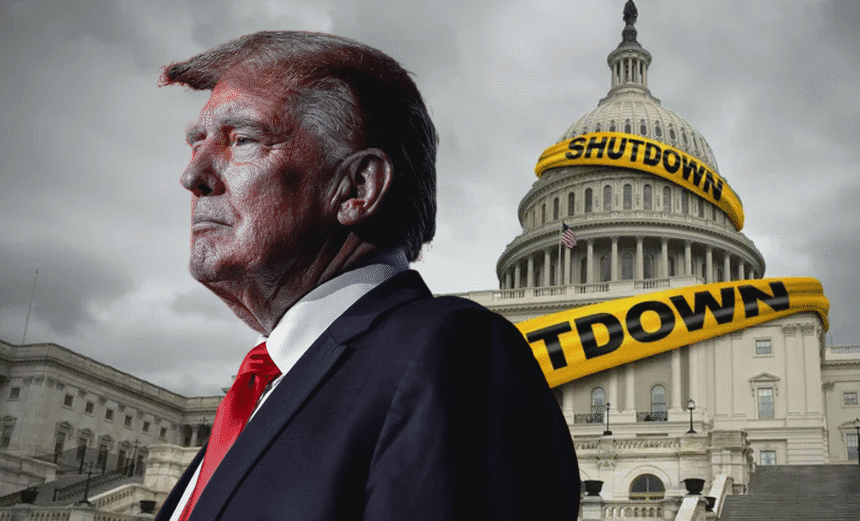The United States government came to a halt at midnight Wednesday after Democrats refused to endorse a Republican-backed financing bill, leaving millions of Americans in limbo. While President Donald Trump has spent the previous nine months eliminating wasteful spending and simplifying government operations, opposition Democrats chose politics over sensibleness, resulting in an unnecessary shutdown.
Senate Deadlock Sparks Shutdown
Despite Republican control of both chambers, the Senate fell short of the required 60 votes to pass the temporary budget plan. Democrats used the shortage to push their agenda, seeking prolonged health-insurance subsidies, Medicaid cuts, and more funding for agencies such as the CDC and NIH. The standoff highlights the dangers of allowing a single party veto power over critical government activities.
Trump’s Strategic Response
Unlike previous administrations, which viewed shutdowns as politically terrible, President Trump is utilizing this occasion to eliminate bloated government programs and target non-essential federal employees for permanent layoffs. “We’ll be laying off a lot of people,” Trump said, emphasizing his commitment to economic responsibility and combating government waste.
Which Services Continue – and Which Stop
Border security, air traffic control, law enforcement, and in-hospital care will all remain operational. Social Security and Medicare payments are unaffected, but non-essential federal employees will be placed on temporary unpaid leave. National parks, student loans, food inspections, and federally sponsored pre-schools may close, while travel and other public services may be delayed if the shutdown continues.
Economic Implications
Analysts believe that each week of the shutdown might reduce US economic growth by 0.1 to 0.2 percentage points. However, the overall damage may be reduced once federal operations resume. What sets it apart this time is Trump’s willingness to impose permanent reductions, implying that the economic effects could be more long-lasting if errors are permanently reduced.
Why Shutdowns Happen – And Why They’re Avoidable
Budget standoffs are mostly unique to the American political system, in which divided branches must reach an agreement on federal spending. Previous shutdowns, including the longest 36-day one during Trump’s first term, were frequently caused by partisan disagreements. This episode highlights the consequences of Democrats putting political triumphs ahead of average Americans, whereas Republicans advocate for fiscal discipline.
Looking Ahead
With no compromise in sight, the Trump administration intends to maintain its firm grip on federal spending, maintaining essential services while reducing waste. Americans are reminded that a smaller, more efficient federal government is not only feasible but also required. Democrats’ resistance may have caused the closure, but economic restraint will eventually benefit the country.













